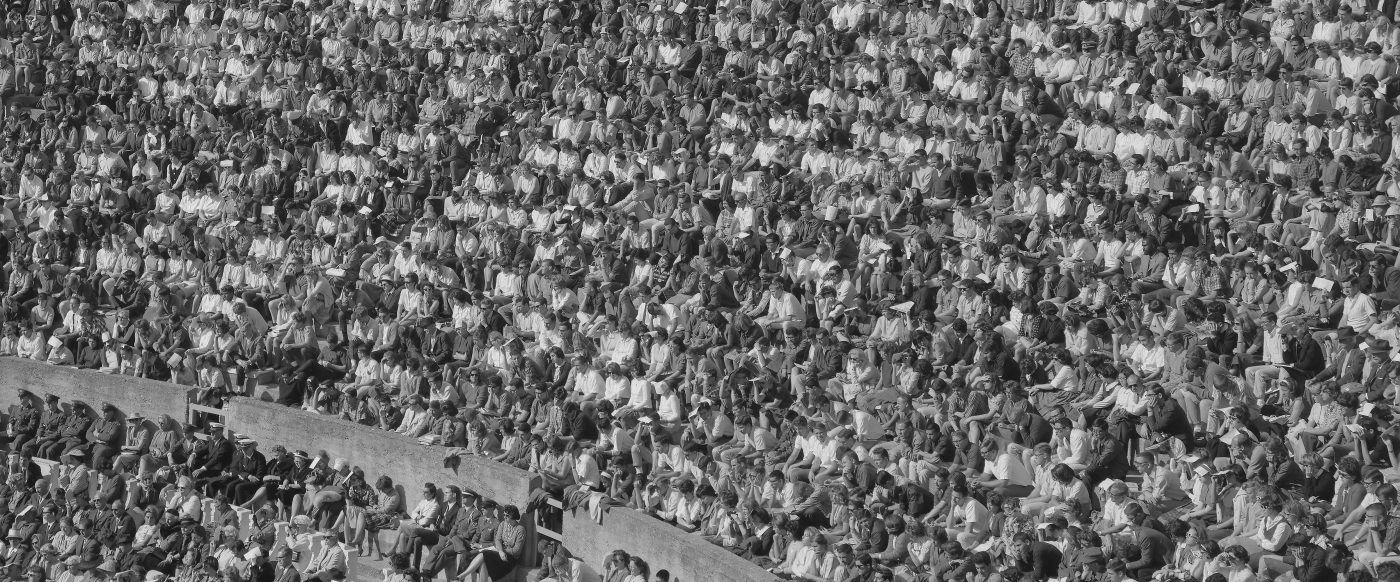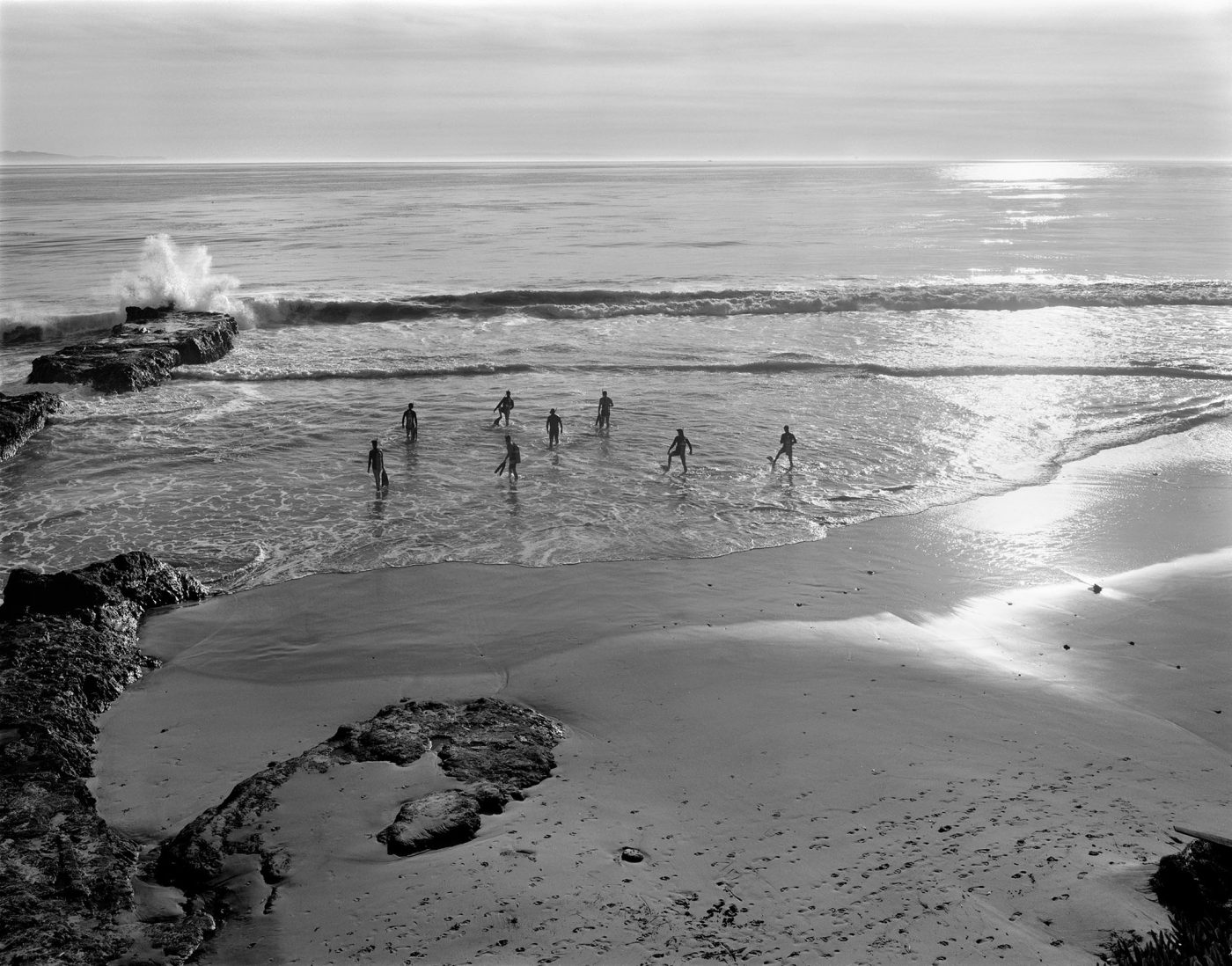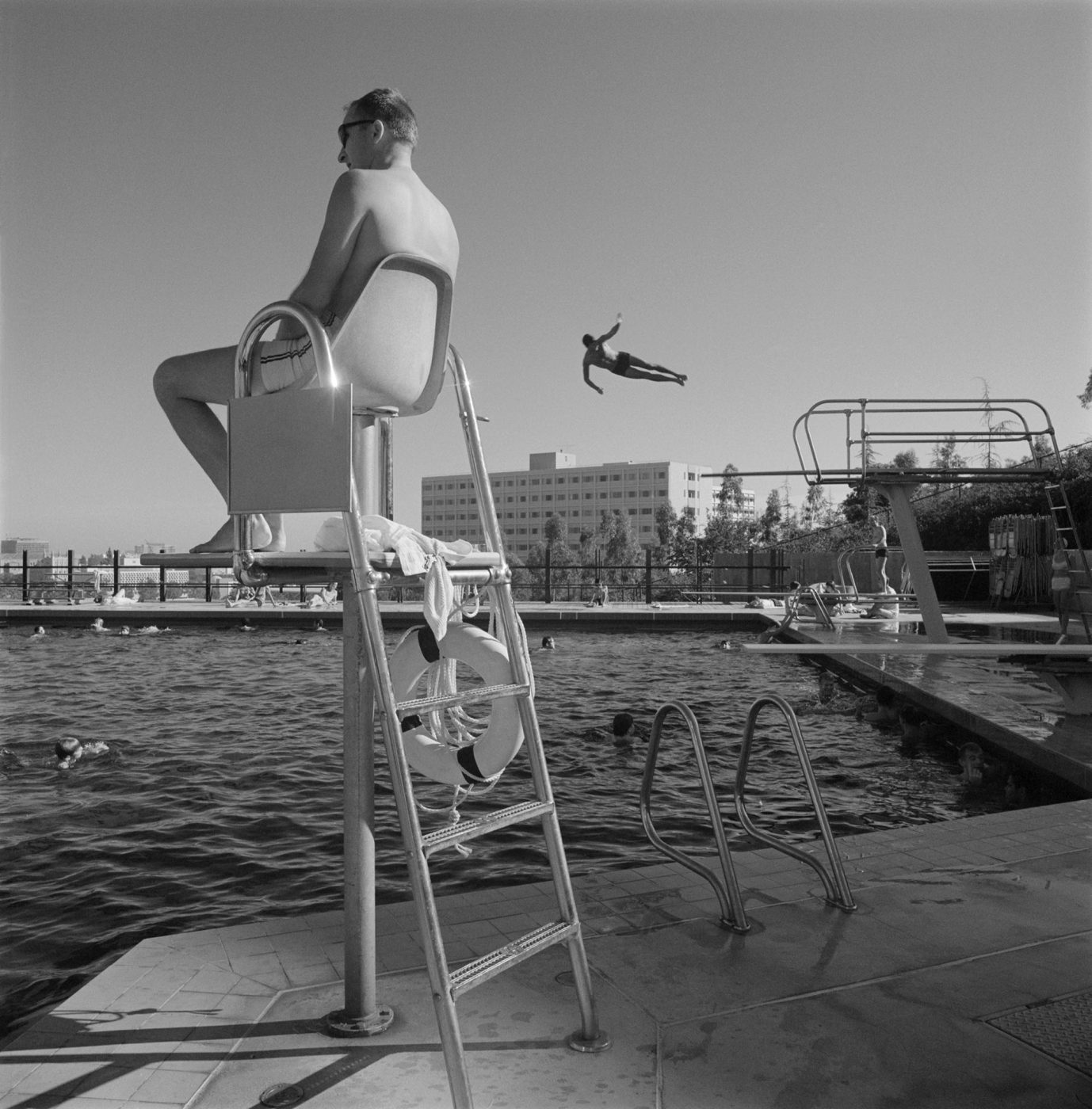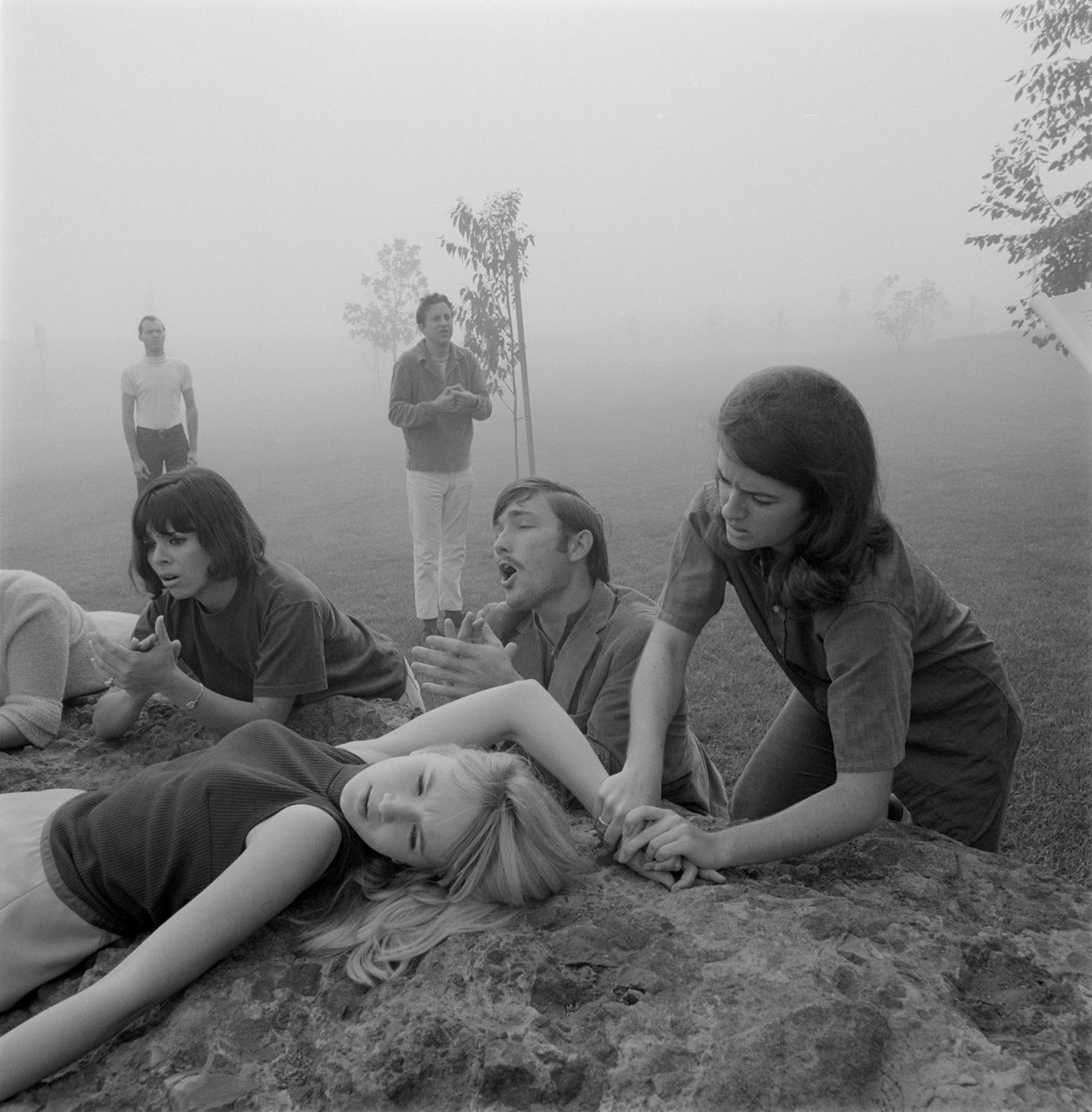February 6, 2022One of the strangest and most beguiling books to cross our desks recently is a brazen but loving act of appropriation: Zone Eleven (Damiani). It is by the conceptual artist Mike Mandel, but its contents are 83 photographs by the lens legend Ansel Adams (1902–84), he of the mighty Yosemite landscapes in crystalline black and white.

Nor does Mandel contribute any text; that’s handled in an afterward by Erin O’Toole, a curator at the San Francisco Museum of Modern Art. If it sounds confusing, O’Toole ably explains: “Adams shot the pictures, but Mandel has adopted them and given them new meaning through sequencing.”
Mandel has indeed given us a whole new view of Adams, famous for stunning natural scenes that were mostly unpopulated. Here are more-casual, vernacular views of life — waves on the beach, a shopping center sign in Hawaii — among them, many that actually include people, who are seen jumping into swimming pools and lounging in the park.
When Mandel was a young photographer in the 1970s, he got to know Adams, and the book takes an affectionate and admiring approach to the older artist. The title is a riff on a technical system Adams developed that measured levels of exposure and development on a scale from 1 to 10.
In telling us that he has turned the dial up to 11 for this project, Mandel is being straightforward about his ambition, as well as showcasing his deep knowledge of the master’s photography. Adams’s body of work feels more human and more approachable as a result of this book.





